In most cases, the change of teeth in kittens is painless. The process is often accompanied by increased salivation and bad breath, which passes on their own within a month. You can recognize the new stage of maturation by reddened gums and some behavioral changes.
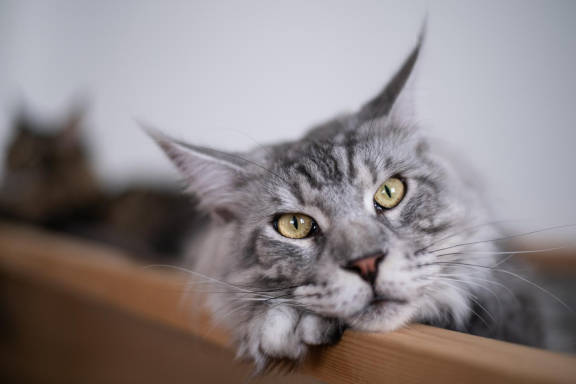
- When Kittens' Teeth Change: Different Kitten Breeds' Tooth Replacement Patterns
- Symptoms of changing baby teeth
- Taking care of a kitten during a period of changing teeth
- Possible complications during the period of tooth replacement
- When do my cat's permanent teeth appear?
- Tooth loss in an adult cat
- The importance of proper oral hygiene in kittens
- Contributor Bio
- A cat's tooth fell out. What to do at home?
- Diagnosis of the causes of tooth loss at the veterinary clinic
- How to help a kitten with a change of teeth
- Changing teeth
- Dental Care
- Complications that need to see a veterinarian
- Gingivitis or severe bleeding of the gums
- Residual teeth
- Symptoms of Changing Teeth
- A kitten at eight weeks of age
When Kittens' Teeth Change: Different Kitten Breeds' Tooth Replacement Patterns
Do kittens need special care when their teeth change? What to feed the pet, what symptoms indicate problems and what to do? Almost all newborn kittens have no teeth. In rare cases, babies are born with pitted incisors. At a normal rate of development, by 4 weeks of age, a kitten will have 26 baby teeth, including incisors, canines, and premolars.
The baby teeth will serve the kitten for several months. If the cat has enough milk, and if the babies are given timely and balanced nutrition, and if there is no delay in weight gain and development, the change of teeth will begin at 3-4 months of age. The molar teeth, once grown, will serve the cat for the rest of its life, until the old age.
The size and number of teeth can determine the age of a kitten. The 26 baby teeth are distributed as follows: 12 upper teeth and 14 lower teeth. An adult cat has 30 teeth: 14 lower and 16 upper teeth. An additional four teeth (the outermost teeth on each side of the jaw) emerge at 4 to 7 months of age.
Symptoms of changing baby teeth
Long before the molars begin to erupt through the gums, they develop from what are called tooth buds located in the upper and lower jaws. As the molars develop and become larger, they begin to cling to the roots of the baby teeth. Constant contact and mechanical irritation leads to the destruction of the roots of the baby teeth, which stimulates loosening and falling out.
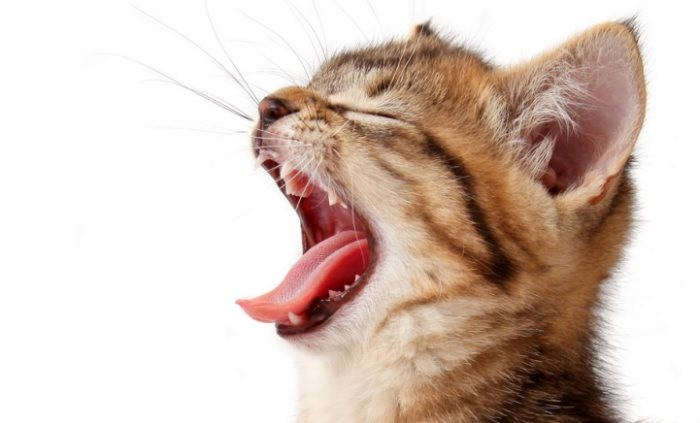
Note! Your observation will allow you to notice the odor that has come out of your pet's mouth as soon as the baby teeth have begun to loosen. The smell may seem unpleasant or pungent, but it is natural until the teeth change.
The roots of baby teeth break down gradually. The teeth become movable, but are held firmly in the gums until their roots are completely eroded. Tooth loss occurs when the root is thinning or completely destroyed.
As the molars grow, the tops of the baby teeth become very mobile and can fall out while eating. Experience shows that it is rare for an owner to catch a tooth falling out. A kitten can clench her jaws hard and cause a tooth to fall out while she is eating, playing or doing other things.
While the kitten's molars are erupting, there may be alarming symptoms such as excessive salivation due to irritation of the mucous membranes in the mouth. On examination, it may be found that the kitten's gums are swollen, swollen or red. Temporary refusal of food or poor appetite is to be expected.
Almost all kittens have a desire to chew non-edible objects, such as toys, wires, string, etc., during the change of teeth. At this stage it is important to predict and compensate in advance, so that trying to calm the itching does not end in tragedy.
Taking care of a kitten during a period of changing teeth
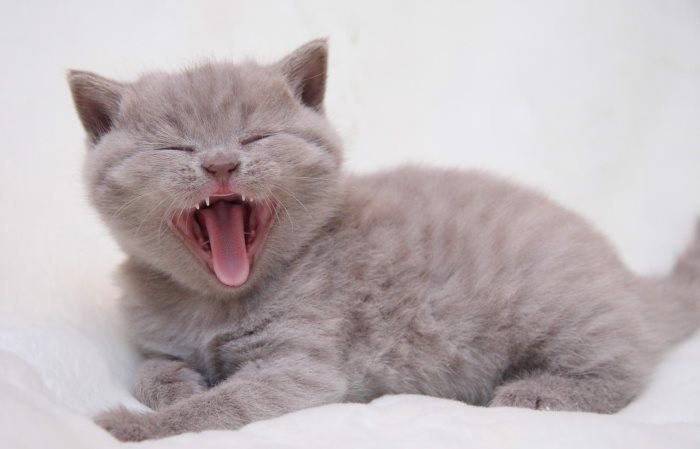
The change of milk teeth in cats should take place under the supervision of not only the owner. It is advisable to show your pet to a veterinarian to confirm the correct origin of the process. This is necessary even if, at first glance, nothing indicates that there is a problem.
Due to the fact that the most frequently diagnosed problem of the oral cavity and teeth in cats in particular is tartar, regular brushing of the teeth is necessary. In the wild, such a problem does not exist in members of the feline family. Domestic animals get softer types of food, provoking the formation of plaque.
Under the influence of opportunistic microflora in the oral cavity, as well as exposure to salts and food debris, tartar is formed. Advanced cases of tartar formation in cats require cleaning in veterinary clinics under general anesthesia.
You can prevent the formation of calculus by feeding your cat special food (do not give him too soft food), giving him dry food with coarse particles, and cleaning the cat's teeth by yourself several times a month with special pads. Measures to prevent dental problems in cats include sanitation of the mouth with the medication Stomadex.
Vaccination during the period of tooth replacement is a controversial issue. Some experts do not recommend vaccinating an animal during a change of milk teeth, while others, on the contrary, do not consider the physiological process a contraindication to vaccination. There are no obvious contraindications to vaccinating kittens during the loss of milk teeth.
The contraindication is the presence of other abnormalities in the kitten's body. It is not recommended to immunize babies with weak immunity and in the presence of colds. After a clinical examination prior to routine vaccination, the veterinarian should determine whether the vaccination can be done.
Possible complications during the period of tooth replacement
Despite the fact that the physiological process of changing milk teeth into permanent ones is rarely accompanied by complications, veterinary specialists strongly recommend routine examinations for timely detection of possible anomalies and pathologies.
The most common complications during the period of change of teeth in cats are:
- Inflammation of the gums. The eruption of teeth or their change is accompanied by minor processes of inflammatory nature, which stop on their own after the formation of the row. Feeding the wrong food or natural food prolongs the inflammation of the gums.
- Stuck baby teeth. Often enough, the baby teeth do not start to wobble and fall out until the baby teeth have erupted. When the physiological process is disturbed, the milk bone stays in the gum, thus preventing normal passage. Untimely help leads to injuries to the gums, cheeks and even lips of the animal.
There are also different causes that provoke disorders in the change of teeth. Among them are distinguished:
- Incorrect location of the rudiment of the permanent tooth;
- Increased growth of the lower or upper jaw during the period of tooth change;
- Too narrow lower jaw (in Persian breeds);
- Insufficient development of the masseter muscles;
- Genetic predisposition.
Attentive attention to your pet, makes it possible to promptly identify possible malfunctions in the formation of the pet's bite, the presence or absence of teeth. Change of teeth in cats should from time to time be monitored by a veterinarian.
If pathology begins, the doctor will be able to provide timely qualified assistance and complications can be avoided. It is important to remember that dental disease in cats in adulthood quite often begins with the process of changing their teeth.
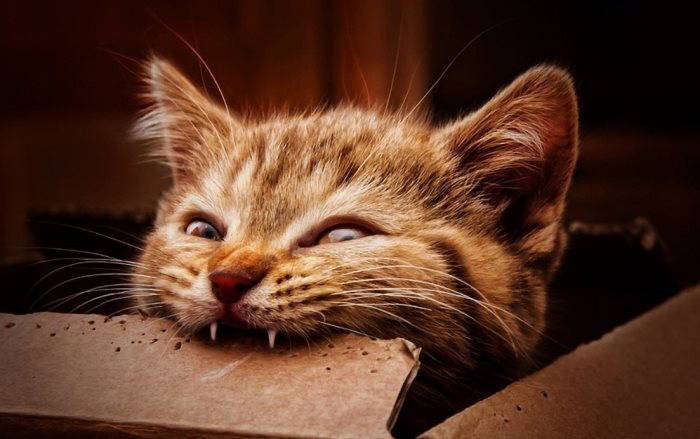
When do my cat's permanent teeth appear?
Cats' milk teeth don't change for quite a long time. It's not until the age of 14 weeks that the baby begins to replace the milk teeth with permanent ones. They are replaced just as they were growing, in sequence, so the milk incisors fall out first, since they grew first, and gradually all the teeth are replaced.
At 4 to 5 months of age, the premolars are replaced, and at 5 months of age the canines are replaced. At 5 months of age, kittens also have permanent molars, which are the only teeth that do not have their counterparts in the milk teeth.
In a cat over 6 months of age, all teeth must be permanent. And there are 30 of them: 6 incisors, 2 canines, 4 premolars and 2 molars on the lower jaw, and 6 incisors, 2 canines, 6 premolars and 2 molars on the upper jaw.
Tooth loss in an adult cat
Just like humans, aging four-legged animals can lose their teeth. How quickly this process occurs, when it begins, is determined both by genetic predisposition and by the dental diseases the pet has gone through in life. This, in turn, depends on many different factors.
Tooth loss in a cat is primarily a medical phenomenon. Health problems such as tooth decay, tartar, and gingivitis contribute to it. And these, among other things, are the result of improper dental care for your four-legged friend throughout his or her life. Just like in humans.
The importance of proper oral hygiene in kittens
Dental and gum disease are common in cats, but by making an effort to maintain your kitty's oral health, you can prevent them from occurring in the future.
Regular dental care with checkups and brushing can reduce medical costs and prevent diseases such as gingivitis, periodontitis and tooth resorption. You should start the treatment after the end of teething to avoid additional discomfort for the kitten. You should also give the kitten age-appropriate food – this will also make teething-related pain relief easier.
The process can be very stressful for your kitten, so you need to give her lots of love, encouragement and patience until her new teeth are in place.
Contributor Bio
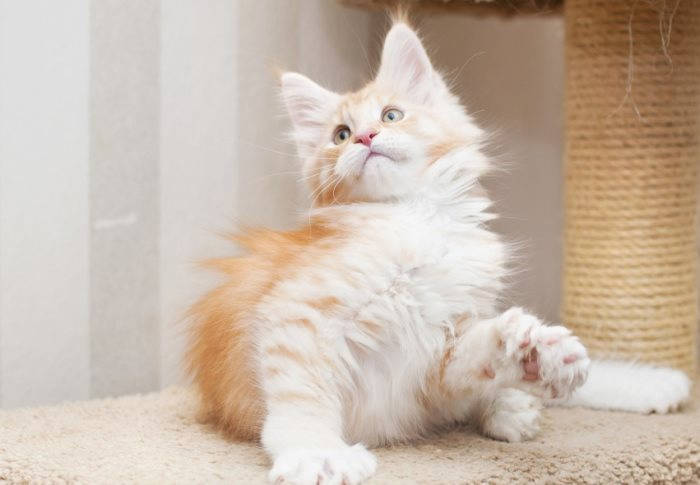
Christine O'Brien is a writer, mom and longtime owner of two Russian blue cats who are the main ones in the house. Her articles can also be found at Care.com, What to Expect and Fit Pregnancy, where she writes about family life, pets and pregnancy. Subscribe to her on Instagram and Twitter @brovelliobrien.
A cat's tooth fell out. What to do at home?
If a cat owner discovers that a tooth has fallen out or broken, take the cat to a veterinarian without delay. Under no circumstances should you touch the place where the tooth has fallen out, loosen the broken tooth or try to remove its parts yourself.
A tooth loss in a cat should not be left unchecked. Trauma resulting in loss of teeth without timely treatment and treatment may be complicated by bleeding, further damage to the jaw and teeth adjacent to the lost ones, penetration of bacterial infection into the damaged tissues, which may lead to sepsis. Non-injury-related tooth loss points to pathological processes in the cat's body, which without treatment may be life-threatening.
Diagnosis of the causes of tooth loss at the veterinary clinic
Adult tooth loss in cats is not an independent disease, it is a sign of serious disorders in the animal's body. The exact cause of tooth loss and full treatment can only be determined at the veterinary clinic.
At the reception the cat will be thoroughly examined by a specialist. In addition to carrying out a general and dental examination, the veterinarian will ask the cat's owner questions about the peculiarities of housing, feeding and the general state of the animal. In addition, if necessary, diagnostic studies will be conducted: blood tests, X-rays, etc.
How to help a kitten with a change of teeth
- Buy new rubber toys and cat teethers. Teething toys can help relieve itching and sore gums. The key is not to pull the toy toward you when you play, but to allow the cat to grab it with its whole mouth and chew on it exactly as much as it wants. To enhance the effect, keep the toy in the refrigerator. A cool surface works well against swelling and inflammation.
- Hide the wiresUnder voltage. Move wires away behind baseboards or obstruct them with furniture. If a kitten chews through the insulation, it can cause serious electrical trauma, up to and including death.
- Keep an eye on oral hygiene. Inspect the mouth regularly for non-healing sores, abscesses, plaque, or delayed tooth changes. If your gums remain swollen for more than 2 weeks or you think a new tooth is growing at an angle and scratching your gums when your jaws close, see your veterinarian right away.
Note. Brushing with a veterinary toothpaste should only be done as directed by a professional. Brushing with a toothbrush or a finger brush can cause additional trauma during the period of tooth changes.
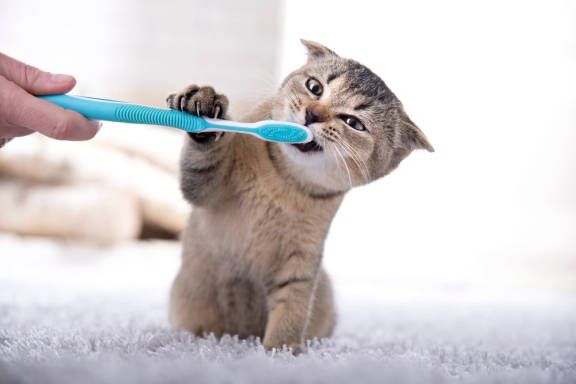
- Adjust your diet. Soak dry kitten food in water or use canned cat food and spiders.
Please note. It is not recommended to give up dry food completely. Compressed pellets are necessary for kittens to develop the jaw apparatus. - Reschedule the mandatory vaccination date. The change of milk teeth to permanent teeth is not a direct contraindication to vaccination. But it may weaken the immune system and make the pet's condition worse during the quarantine period.
- Include vitamin and mineral supplements in the diet. Consult your veterinarian. During an active replacement of milk teeth with molars, kittens may be prescribed supplements with double the dose of calcium and phosphorus and vitamins A and D.
- Spend more time with your kitten. Help your pet get through the stress by distracting him with play or petting. The main thing is not to let the baby bite your hands. Otherwise, this can become a habit and cause serious discomfort in the future.
Changing teeth
The change of milk teeth to permanent teeth begins at about 3-4 months of age. The age of tooth change is the same for kittens of all breeds. As soon as a baby tooth falls out, it is almost immediately replaced with a permanent tooth. In rare cases, milk teeth fall out with a delay: this can lead to dental problems such as an incorrect bite or uneven permanent teeth. If you suspect your pet has a dental problem, be sure to see a veterinary professional.
The order in which milk teeth change to molars is exactly the same as the appearance of milk teeth.
How many teeth does a cat have? Your one-year-old kitten should already have 30 permanent teeth. You can do the math yourself, or make an appointment for a checkup at the vet.
Dental Care
Taking care of your pet's mouth is one of the basics of their health. To avoid dental disease in your kitten, his teeth need to be carefully taken care of. Carefully inspect both baby teeth and molars for dirt, bite patterns or uneven growth. Your veterinarian can tell you how to brush your pet's teeth at home. Also, talk to the vet about what kind of toothpaste and brush you should buy for your kitten at the pet store.
If you notice a strong odor on your cat's breath, be sure to consult your veterinarian about what it may be related to. In addition to poor hygiene, your kitty may be sick with something.
All problems are easier to prevent, so don't hesitate to see your vet in time.
Complications that need to see a veterinarian
Inspect your pet's mouth every few days to avoid complications. If he is lethargic, anxious, meows constantly and refuses to eat for more than a day, make an appointment to be seen at the vet. These symptoms often occur with severe inflammation.
Gingivitis or severe bleeding of the gums
Gingivitis, or inflammation of the gums, is the most common complication. When this problem occurs, the mucous membranes become bright red and severely swollen. The fur on the chest becomes ruffled due to excess saliva dripping from the mouth.
If severe bleeding gums, harsh, disgusting odors or odors are added to these symptoms, it may be periodontal disease, affecting the deeper layers of the mouth. Don't delay in going to the vet, as self-treatment won't help.
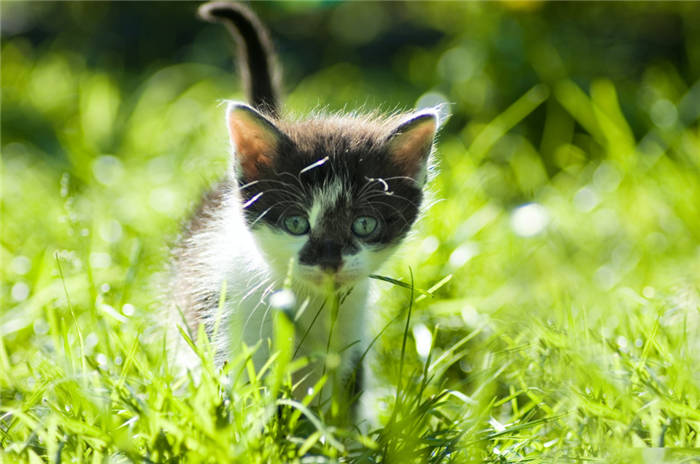
Residual teeth
This phenomenon is called persistence. Preservation of two rows is fraught with a violation of the bite and increased mucosal trauma. The problem is solved surgically. The mustached patient is put under anesthesia and all unnecessary things are removed. Despite general anesthesia, cats easily tolerate such an operation.
For an easier process, help your whiskered pet with mouth brushing, incorporate solid foods into his diet or stick to soft foods. Talk to your vet about adding vitamin and mineral supplements and have them checked regularly at the vet's office before a full canine change. If you have any problems with chewing or loss of interest in your favorite treats, check outside of the scheduled schedule.
This article is for informational purposes only. Contact your veterinarian!
Symptoms of Changing Teeth
In most cases, a kitten's period of tooth change is almost imperceptible to the owner, but there are symptoms to look out for. And when they appear, for the health of the kitten and your own peace of mind, it is better to visit the veterinarian.
Naturally, at some points, sore gums can lead to refusal of food, it is not dangerous. But if the "hunger strike" lasts more than a day, it should get your attention.
Unpleasant odor appears at tooth changes in most cases. Inspect your kitten's mouth regularly. If you find severe redness or ulceration of the mucous membrane, don't let it go unnoticed.
This situation is common and can be explained by the fact that the molar teeth do not grow out of the same hole as the milk teeth. That is, physiologically, the molar tooth does not "push out" the baby tooth. For a while this situation should not be frightening.
If the teeth do not interfere with each other, the gum is not inflamed, you should not worry. No cat in the world has a double set of teeth, so your kitten will sooner or later lose her "double set". But if baby teeth prevent the growth of permanent teeth, inflamed gums, teeth that hurt the tissues of the mouth, it's an indication for a visit to the vet.
A kitten at eight weeks of age
When kittens reach the age of two months, they usually stop receiving their mother's milk and switch to self-feeding. You can transfer the kittens to a high-calorie food which will provide them with all the nutrients they need and will suit their croquette size and texture. This should be done gradually so as not to disrupt their digestion. During this period, it is also wise to discuss vaccinating kittens with your veterinarian.
At this age, kittens grow very quickly. Even though their energy needs have decreased, kittens need three times as much energy as an adult cat. Kittens need to prepare for their most intensive weight-gaining period which takes place at the age of four to five months when kittens will put on 100 grams per week. Kittens' sleep regime becomes close to that of an adult cat (from 13 to 16 hours a day). Socialization processes are completed. Now they can play with other kittens and with you.
At the age of 12-15 months, the kitten becomes an adult cat. His growth stops. Knowing your kitten's early life and needs allows you to create the necessary conditions for your pet to reach adulthood healthy.






